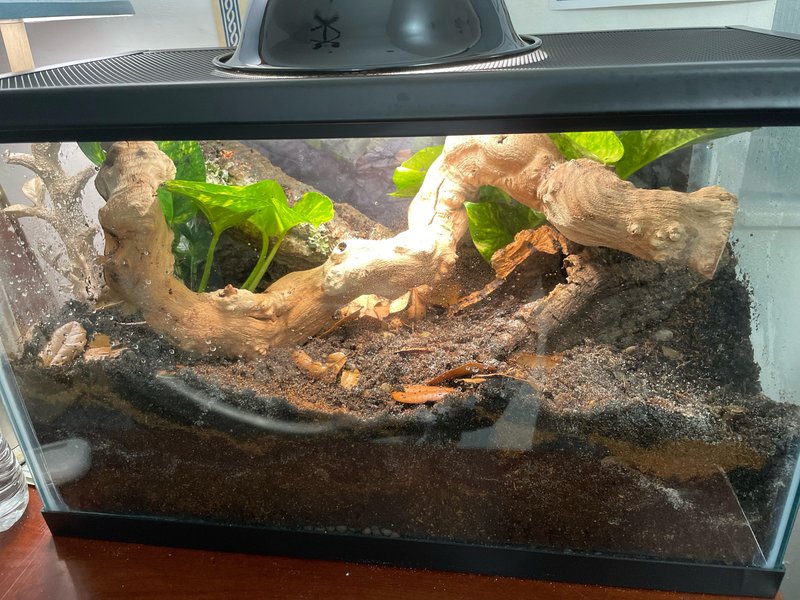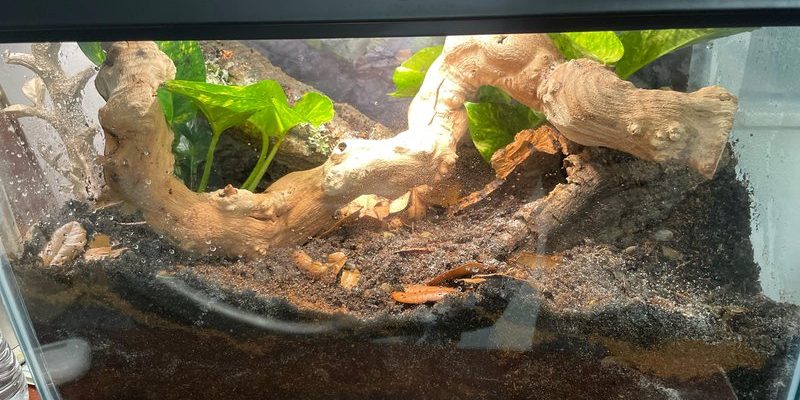
If you’re new to keeping emperor scorpions, you’re in for a treat. These fascinating creatures are not just beautiful; they also have unique needs when it comes to their environment. Whether you’re using a specific brand of terrarium or assembling your own setup, there are key elements you need to consider to ensure your scorpion thrives.
Let’s dive into the essentials of creating the best enclosure for your emperor scorpion, focusing on everything from size and substrate to temperature and humidity.
Choosing the Right Enclosure Size
When it comes to housing your emperor scorpion, size certainly matters. A general rule of thumb is to choose a terrarium that’s at least 10 to 20 gallons. This gives your scorpion enough room to roam and explore without feeling cramped. Think of it like picking out an apartment; you wouldn’t want to squeeze yourself into a tiny studio if you can afford something with a bit more space!
For a single emperor scorpion, a 15-gallon tank is usually a sweet spot. It provides enough horizontal and vertical space for digging, climbing, and hiding. If you’re planning to have more than one, be sure to adjust the size accordingly. Overcrowding can lead to stress or aggression, which is the last thing you want in your scorpion home.
Ideal Substrate for Burrowing
Let’s talk about bedding! Emperor scorpions are natural diggers, so choosing the right substrate is crucial. A good mix of coconut fiber, peat moss, and sand works wonders. This combination mimics their native habitat and allows them to create tunnels and burrows. The substrate should be at least 3 to 4 inches deep to accommodate their digging desires.
You might be wondering how to set this up. Start by layering the substrate evenly. Be sure to moisten it slightly; it should hold shape when squeezed but not be soggy. A good substrate not only provides a sense of security for your scorpion but also helps regulate humidity within the enclosure. Plus, it adds a natural look to the tank—who wouldn’t love that?
Temperature and Humidity Control
Maintaining the right temperature and humidity is essential for a happy emperor scorpion. They thrive in warm climates, so keeping the enclosure between 75°F to 85°F is ideal. Using a heat mat or a ceramic heat emitter can help achieve this. Just make sure it’s placed on one side of the tank to create a temperature gradient. That way, your scorpion can choose where to hang out based on its needs.
Humidity is another key player here. Emperor scorpions prefer a humidity level of around 70% to 80%. Regular misting can help maintain this level, but you’ll want to avoid overdoing it. Too much moisture can lead to mold growth or respiratory issues. A hygrometer can be an invaluable tool to monitor these levels accurately.
Decor and Hiding Spots
Every good home needs a bit of decor, and your scorpion is no different. Include plenty of hiding spots and climbing structures in the enclosure. Items like cork bark, rocks, or even artificial plants can create naturalistic nooks for your scorpion to explore and feel safe.
Here’s something to keep in mind: emperor scorpions can be quite shy. They appreciate places to retreat to, especially during the day when they’re less active. This not only reduces stress but also allows them to display their natural behaviors. Arrange the decor in a way that encourages exploration while ensuring a sense of security.
Water Source and Feeding
Providing fresh water is crucial, but it’s also simple! A shallow dish with clean water is all you need. Make sure it’s not too deep, as scorpions can get stuck if they fall in. Change the water regularly to keep it fresh and free from debris.
Now, let’s talk about feeding. Emperor scorpions are carnivorous and typically enjoy a diet of crickets, roaches, or mealworms. It’s best to offer suitable prey items that are around the same size as the scorpion itself—this is important to prevent any risk of injury. Feed them every few days, but be sure to remove any uneaten food to keep the enclosure clean.
Lighting and Day/Night Cycle
Unlike many pets, emperor scorpions don’t need bright lights. In fact, they prefer a low-light environment. A simple day/night cycle is more than enough. You can simulate this by using a light on a timer for about 12 hours a day. Just avoid direct sunlight, as this can overheat the enclosure and stress your scorpion.
If you want to be extra fancy, consider using UVB lighting. While it’s not absolutely necessary, some keepers believe it can help in the overall health of captive scorpions. However, keep it at a low intensity and ensure your scorpion can retreat from it when needed.
Regular Maintenance and Care
Setting up your emperor scorpion’s home is just the beginning. Regular maintenance is key to keeping the enclosure thriving. This means cleaning the substrate, refreshing the water, and checking for any mold or unwanted pests.
A good cleaning routine might involve changing out the substrate every few months and doing spot cleans weekly. Just keep in mind that during cleaning, you should handle your scorpion with care or leave it undisturbed in its hide to reduce stress.
You might also want to monitor the overall health of your scorpion. Look for signs of lethargy or changes in appetite, which could indicate health issues. Keeping a close eye can help you catch any problems early, ensuring a long, healthy life for your scorpion.
Setting up the best enclosure for your emperor scorpion is all about understanding and replicating their natural environment. From the right tank size and substrate to maintaining ideal temperature and humidity, every detail matters. Remember, this isn’t just a box for your pet; it’s a carefully curated space that allows your scorpion to thrive.
So, roll up your sleeves and get to work on creating a beautiful habitat! With a little effort and attention to detail, your emperor scorpion will have all the space it needs to be comfortable and happy—much like any other creature in its own cozy home. Happy scorpion-keeping!

